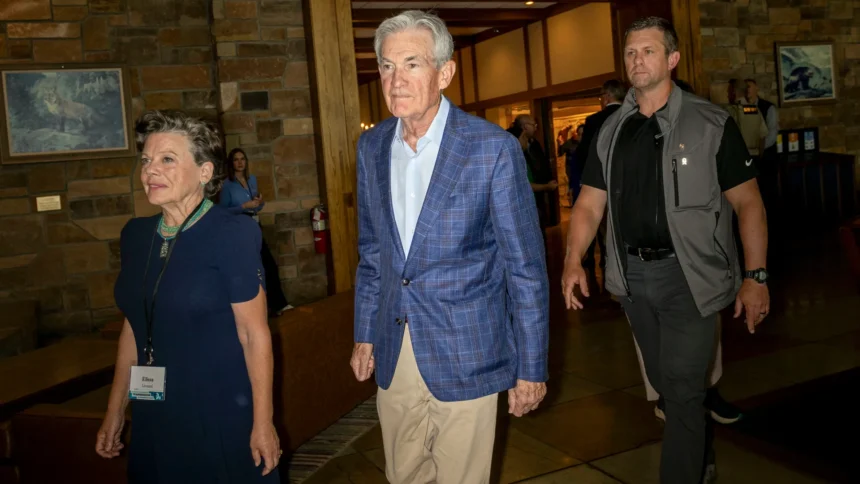The Federal Reserve finally did it. They changed things up. They lowered rates a bit, trying to show they were paying attention. But here’s the thing: investors weren’t exactly jumping for joy. The response was pretty mild, like getting a gift you knew was coming. You smile, but you’re not super excited. That’s where we’re at right now.
The Fed’s rate cut, just a little bit, should have made people feel good. It meant cheaper borrowing, easier money, maybe a small lift for businesses and people. It looked good on paper. But Wall Street’s reaction? Not so much. Stock prices went up and down a bit. Bond yields moved a little, then stopped. Traders weren’t sure if this was good news or just a small step.
Why the cold shoulder? The policy shift didn’t have a clear plan. Chair Jerome Powell said the right things. Inflation is getting better; we’re watching closely, and we’ll change things if we need to. But he didn’t promise anything solid. Investors don’t like not knowing what’s going on. They want clear goals and dates. Instead, they got a central bank moving slowly, watching both inflation and jobs, not wanting to commit too much either way. And you can’t really blame them.

Inflation hasn’t disappeared. It’s lower than in 2022 and 2023, but it’s still there. In August, prices went up 3.8% from last year. That’s almost double what the Fed wants. Food costs a lot. Rent is crazy. Gas prices keep changing. People don’t care about percentages; they care that groceries cost more. To them, the Fed’s progress doesn’t feel like anything has changed.
At the same time, raising rates further would be a disaster. People with mortgages are already struggling. Small businesses are having trouble with loan payments. Young families can’t even think about buying homes because borrowing money is too expensive. A shop owner said his payments are now higher than his profit. That’s the kind of problem the Fed has to think about. Cut too little, and the economy slows down. Cut too much, and inflation comes back. It’s a tough balance, and investors know it.
That’s why they’re not celebrating.
Markets wanted bigger changes. Maybe a hint of more cuts coming this year. Maybe a bigger promise to stop selling off bonds. Instead, Powell basically said: We’ll slow down a bit, watch, and see what happens. That’s not what Wall Street wanted to hear.
And it shows. The Dow moved up and down a lot. The Nasdaq went up, then down. Treasury traders couldn’t decide what to do. It was nervous, not happy.
To regular people, this might sound like complicated money stuff. But it’s not. A young couple in Texas trying to refinance their mortgage will notice if rates keep falling. A retiree in Florida will worry about inflation eating into their savings. A startup founder in California will be watching to see if borrowing money gets cheaper so investors start investing again. The Fed’s choices affect homes, shops, and wallets quickly, even if it sounds confusing.
But Wall Street isn’t patient. Investors want to know what’s coming soon. Some think more cuts are coming. Others say the Fed will stay put if inflation goes up again because of things like oil prices, supply problems, or wars. That uncertainty keeps money out of the market.
Company profits haven’t been great either. Tech companies are doing okay, but others are reporting weak sales. People are buying less. That makes investors wonder if rate cuts can really help the economy. The Fed’s move feels like a temporary fix.
Then there’s the politics. With elections coming up, everything the Fed does gets talked about. Some say they’re helping the White House. Others say they’re not doing enough for people. Powell says the Fed is independent, but there’s a lot of noise. Investors hear it, and it makes them wonder how stable things really are.
So here we are. A rate cut happened. A policy change is happening. But the mood is just okay. Investors don’t want to wait and see. They want certainty. They want things moving forward. Instead, they got careful hesitation.
Still, boring isn’t always bad. Central banks should be predictable. They shouldn’t surprise markets. Sometimes no drama is good. The question is whether people can handle this in-between stage long enough for inflation to fall and the economy to get better.
Because this isn’t just about numbers. It’s about a family paying too much for groceries. A café owner wondering if she can afford a loan. A college grad trying to rent an apartment. The Fed’s choices affect these people. That’s why investors care. That’s why a so-so reaction matters.
For now, the story is: the Fed changed, but didn’t rush. Investors are careful, not excited. The markets are waiting for the next move, holding their breath. And until the Fed shows a clearer plan, the applause will be polite, not enthusiastic.




